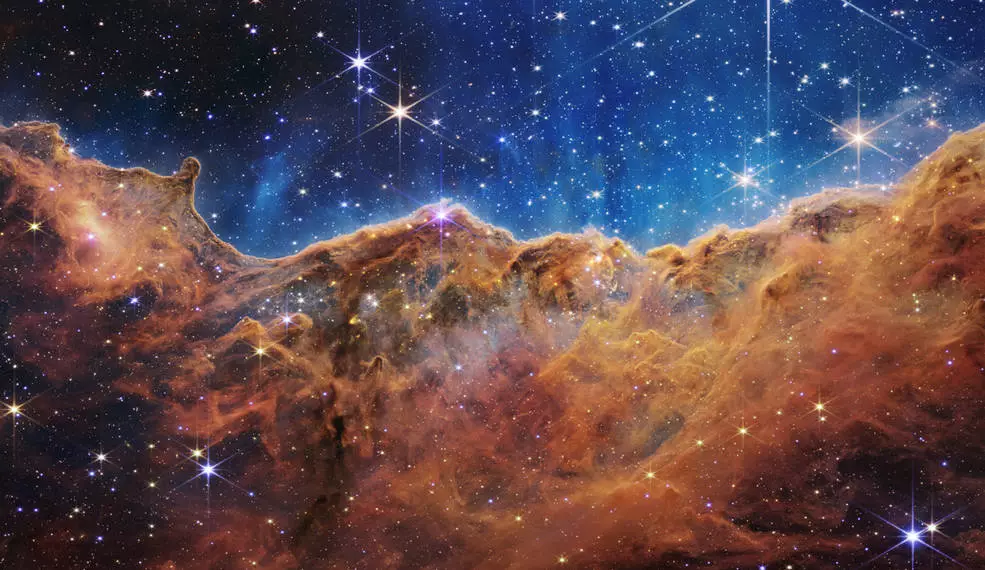These first photographs from the world’s largest and most powerful space telescope
The world is getting its first glimpse of the complete capabilities of NASA’s James Webb Space Telescope, a collaboration with ESA (European Space Agency) and CSA (Canadian Space Agency). The first full-color photos and spectroscopic data from the telescope were revealed during a live broadcast from NASA’s Goddard Space Flight Center in Greenbelt, Maryland, on Tuesday, July 12, 2022, at 10:30 a.m. EDT (14:30 UTC). The targets mentioned below constitute the observatory’s first wave of full-color scientific photos and spectra, as well as the formal start of Webb’s general science activities. An international committee including of members from NASA, ESA, CSA, and the Space Telescope Science Institute chose them.
These first photographs from the world’s largest and most powerful space telescope show Webb at full power, ready to embark on its mission to explore the infrared cosmos.
This picture of “mountains” and “valleys” dotted with brilliant stars is really the edge of the Carina Nebula’s adjacent, young, star-forming area known as NGC 3324. This image, captured in infrared light by NASA’s new James Webb Space Telescope, exposes previously unseen areas of star formation for the first time.
Webb’s supposedly three-dimensional image, titled the Cosmic Cliffs, resembles jagged mountains on a moonlight evening. In actuality, it is the edge of NGC 3324’s massive, gaseous cavity, and the highest “peaks” in this view are around 7 light-years high. The strong UV radiation and stellar winds from extremely large, hot, young stars situated in the core of the bubble, above the area visible in this image, have cut the cavernous area from the nebula.











